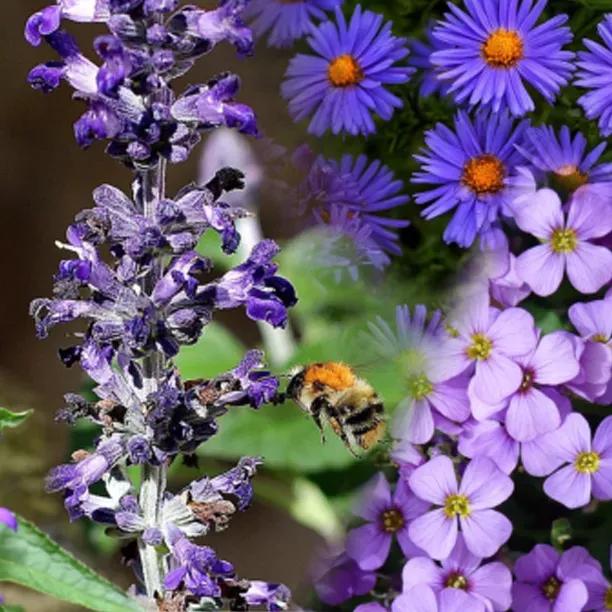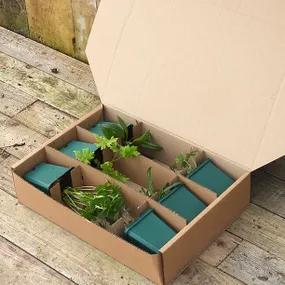Herbaceous Collection, Moody Blues
The details
Mix of 6 Varieties
Pot Grown Herbaceous Perennials- All blue flowers
- Chosen by our garden design experts.
- 9cm Pots
Recommended extras
Description
Moody Blues Herbaceous Perennial Collection: 6 x 9cm Pots
Blue, blue electric blue - our collection of chart-topping favourites to set the mood music in the garden, from smoky blues through to a purple haze. We choose the best that work well together as a combination in pots or in the border.
Browse our other herbaceous perennial collections, or all of our perennial plants.
Features
- 6 individual varieties of moody blues chosen by our garden design experts.
- 9cm Pots per plant.
Our carefully-curated range of blue & purple plants includes, but is not limited to, the following:
Ajuga reptans, Arabis alpina, Aster novi-belgii, Aubrieta, Campanula glomerata, C. persicifolia, Centaurea dealbata, C. montana, Delphinium, Digitalis, Lobelia cardinalis, Penstemon, Salvia nemorosa, Verbascum phoeniceum, Verbena bonariensis, V. rigida.
Please note: We regret we cannot accept requests for specific plants. We select a mix of the best at the time of delivery. The pictures are examples only, your mix may vary.
Growing Herbaceous Perennials
Our perennial collections are selected to be as easy to grow as possible, and are suitable for most garden soils with a decent amount of sun. Each pot will come with its own planting instructions.
In Your Garden Design
Blue is a calming colour and creates a sense of space and endless horizons, so plant at the back of the garden if you want it to appear larger than it is. It also works well as a foil to other plants. Pair with our Regal Whites collection and pink perennials for a soothing combination.
Did You Know?
Blue is one of the three primary colours, yet only 10% of all plant species are naturally blue. Bees (who can't see red) in particular love them, but blue and violet flowering plants are great for all pollinating insects because they typically produce the most nectar.
Blue pigment has long been considered a signifier of importance, associated for centuries with the best, and coolest, chariot racing team in the Greek-speaking Roman Empire. In Medieval times, when the dye was made from costly lapis lazuli, blue was used to symbolise greater wealth than gold in iconography depicting the clothes of Mary Theotokos.



